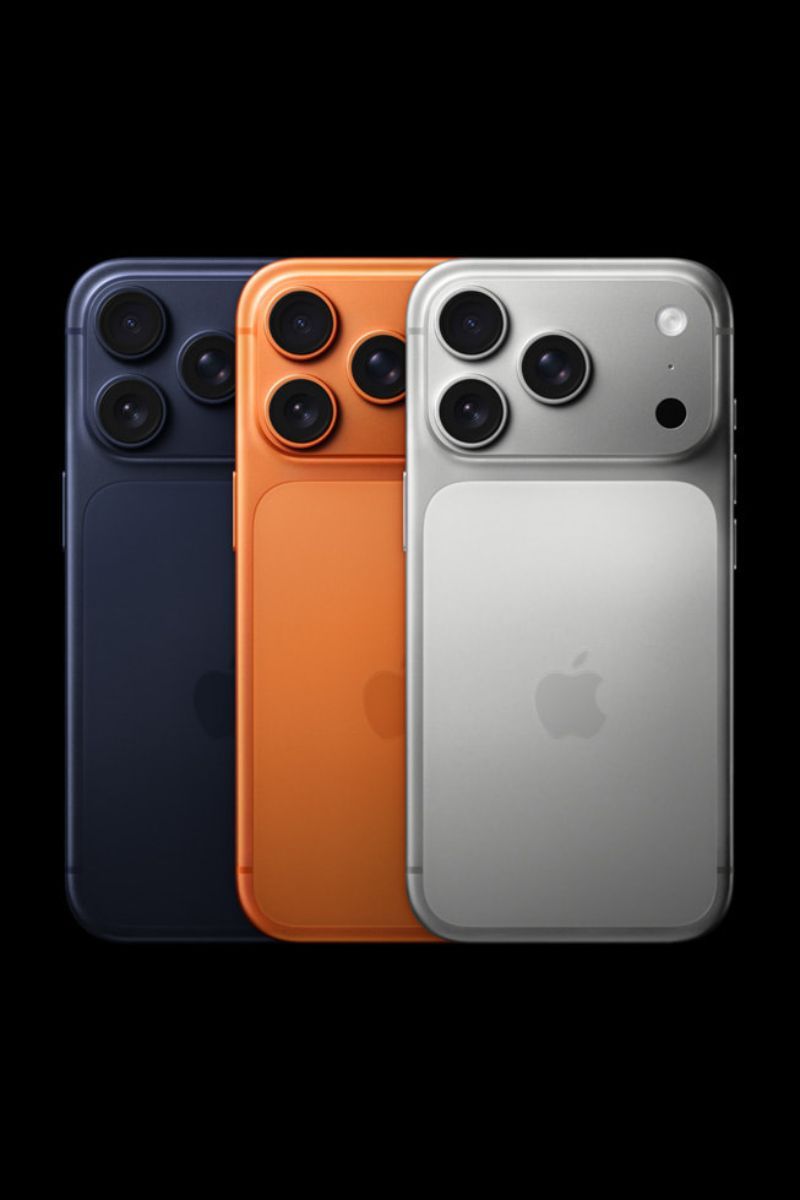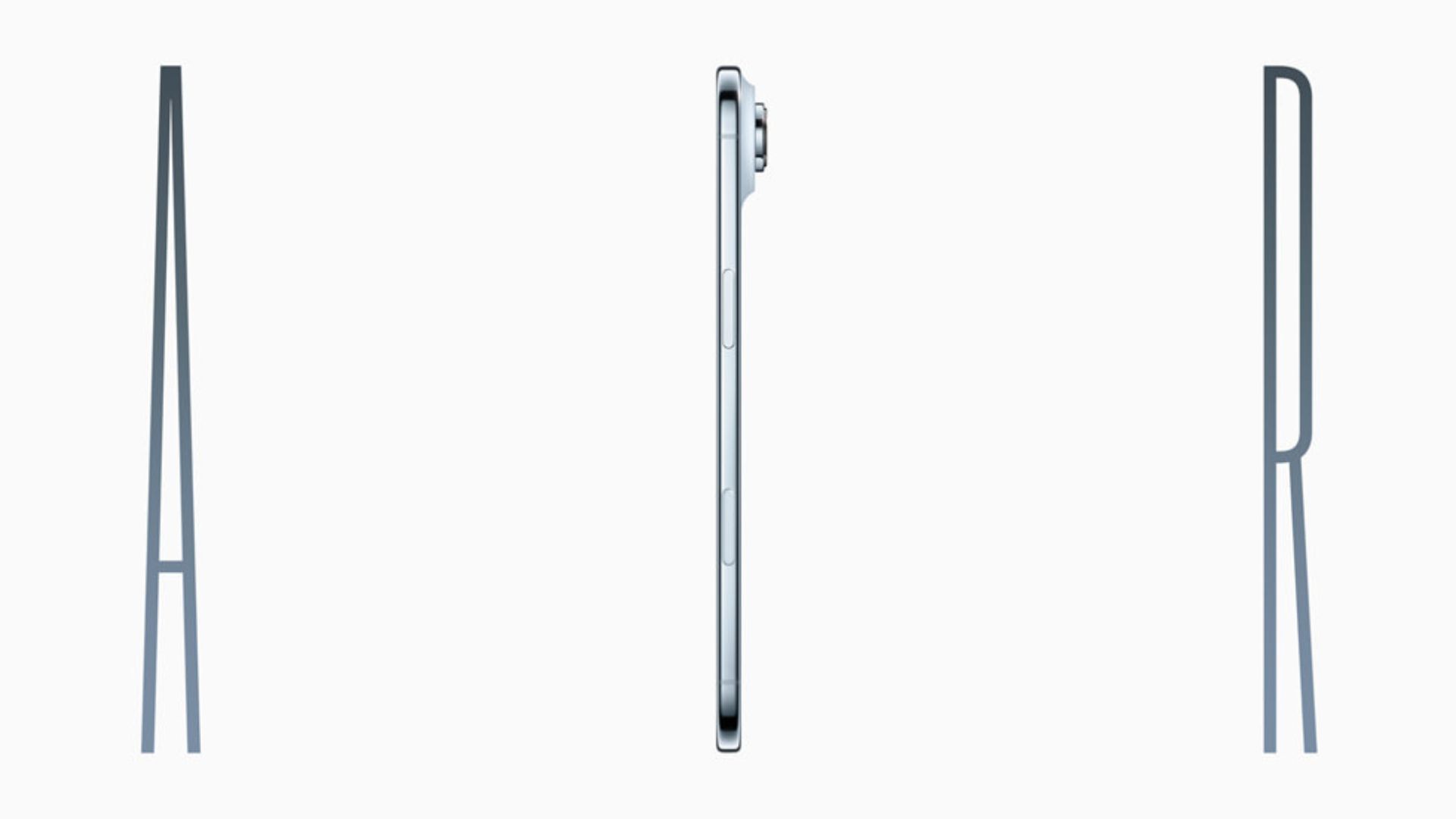Apple’s big 2025 event lived up to its “Awe Dropping” name, delivering its most polarising product lineup in years, headlined by an impossibly thin iPhone, at just 5.6mm thick. The internet quickly responded with equal parts excitement and humor. Here’s a rundown of everything Apple announced.
Air Apparent

The iPhone 17 Air represents Apple's most radical design pivot since the original iPhone. The design is the big story: at 5.6 mm thin, the iPhone Air is thinner than some pencils, making it the slimmest iPhone ever. Apple claims it’s still sturdy – the Air uses a titanium frame with Ceramic Shield coating for durability. It's thinner than most luxury watches, yet houses the same A19 Pro chip that powers the flagship Pro models.
The Air achieves its featherweight profile through a titanium frame wrapped in Ceramic Shield. It packs a 6.5‑inch Super Retina XDR display – a sizeable screen close to the Pro Max, yet in an ultra-thin body Like its siblings, it has up to 120Hz refresh and 3,000 nits brightness.
It also features Apple’s new C1x wireless modem, which is twice as fast as the last-gen modem for cellular data One trade-off: to save internal space, the iPhone Air is eSIM-only worldwide – there’s no physical SIM slot at all. This change helped Apple free up room for a decent battery. In fact, they claim the Air gets “all-day” longevity, roughly up to 40 hours video playback on a charge. That’s impressive if it holds true, though real-world use will tell.
The camera system, while streamlined to maintain the svelte profile, remains remarkably capable. It uses a 48MP main camera paired with a 12MP telephoto lens, offering portrait and zoom modes (It forgoes an ultra-wide lens, likely to keep the chassis thin.) It does gain a fun ability to record video from both front and back cameras at once – great for multi-angle vlogs. The front camera is a 18MP Center Stageselfie cam, ensuring your video calls keep you centered Like the Pros. The Air includes the new Action Button on the side for quick shortcuts, and a “Camera Control” feature to quickly launch camera or AI vision tools. The iPhone 17 Air being a new premium tier, starts at ₹1,19,900 (256GB) in India. Higher storage options are ₹1,39,900 (512GB) and ₹1,59,900 (1TB). Colour options include Black, White, Light Blue, and a Beige hue. It’s pricey, but you’re paying for that blend of big-screen and featherweight design – a niche some will love.
Intelligence Redefined: AirPods Pro 3 Break New Ground
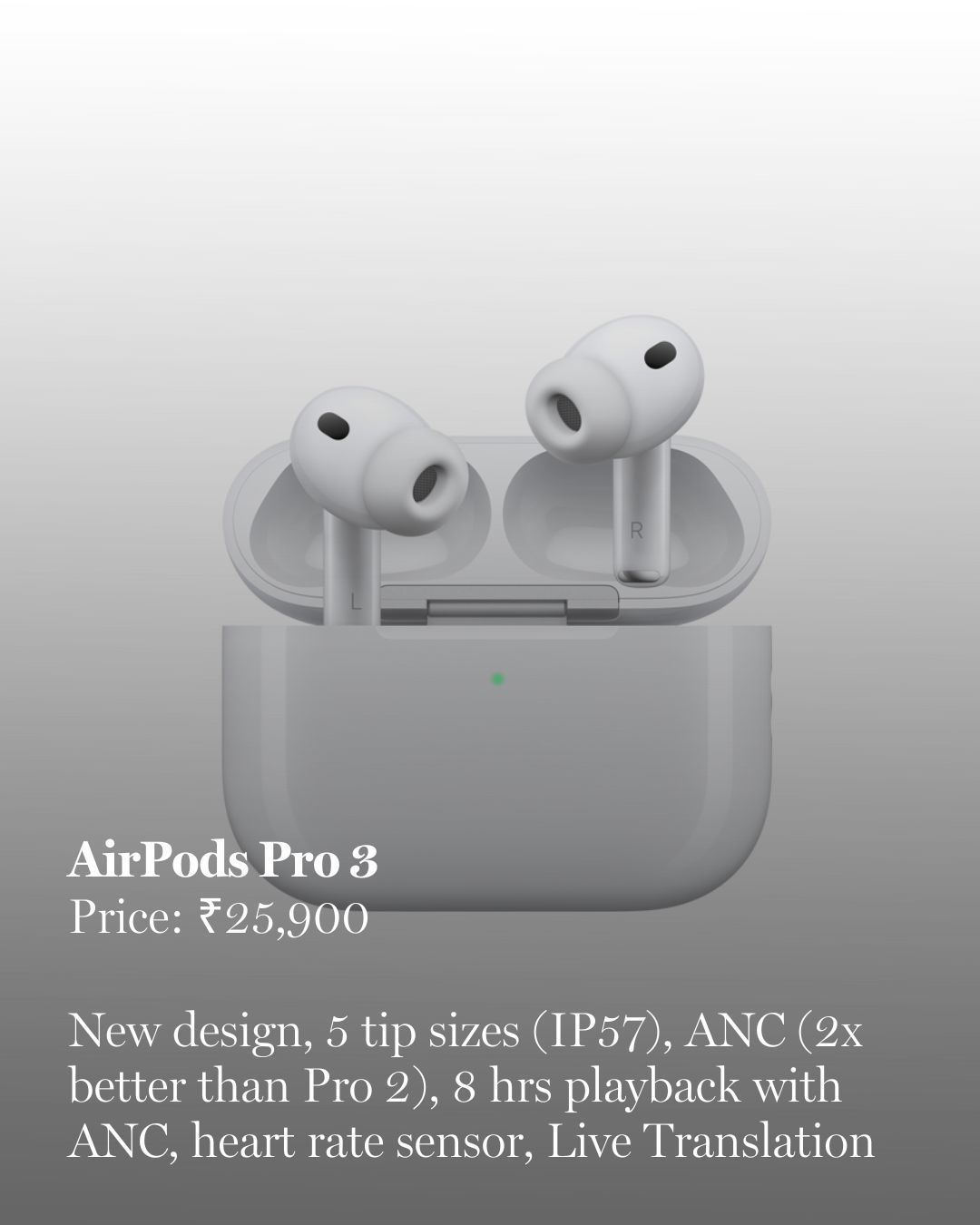
After three years, Apple finally launched AirPods Pro 3 with substantial upgrades over the Pro 2. The new AirPods Pro 3 pack Apple’s H3 chip (with “Apple Intelligence”) and boast what Apple calls the “world’s best ANC” – Active Noise Cancellation that’s 2x more effective than before. This is achieved with foam-infused ear tips for better noise isolation and advanced computational audio, delivering an even quieter experience for your music.
The headline feature here is the built-in heart rate sensor. Each earbud now includes a tiny PPG sensor that shines infrared light to measure your heart rate through your skin. This lets the AirPods track your workout intensity, calories burned, and even provide fitness coaching via a new Workout Buddy feature.
Apple also introduced a futuristic Live Translation mode. With this on, the AirPods can listen to someone speaking in a foreign language and play a translation in your ear in real-time. Other improvements include a more ergonomic design – the earbuds are slightly smaller and now come with 5 ear tip sizes (XS to XL) for a better fit. They’re also more rugged, rated IP57 for water and dust resistance, so they can survive sweat and splashes. Battery life is up to 8 hours per charge (10 hours with transparency mode on), and about 24 hours total with the case – a nice bump up over the previous gen. The case itself is slicker (smaller, with USB-C and Qi2 wireless charging) and has the same handy lanyard loop.
AirPods Pro 3 cost ₹25,900 in India, with pre-orders already open and deliveries from Sept 19. That’s the same launch price as the last Pro, which should please buyers. The AirPods Pro 3 finally give us enough reasons to upgrade – with better sound, smarter features, and even a check on your heart.
New Apple Watches: Series 11, SE 3, and Ultra 3
Apple also refreshed its smartwatch lineup with three new models: the mainstream Watch Series 11, an updated affordable Watch SE 3, and the rugged Watch Ultra 3 for adventurers. All three run the latest watchOS 26 and, notably, all now support 5G connectivity (a first for Apple Watch).
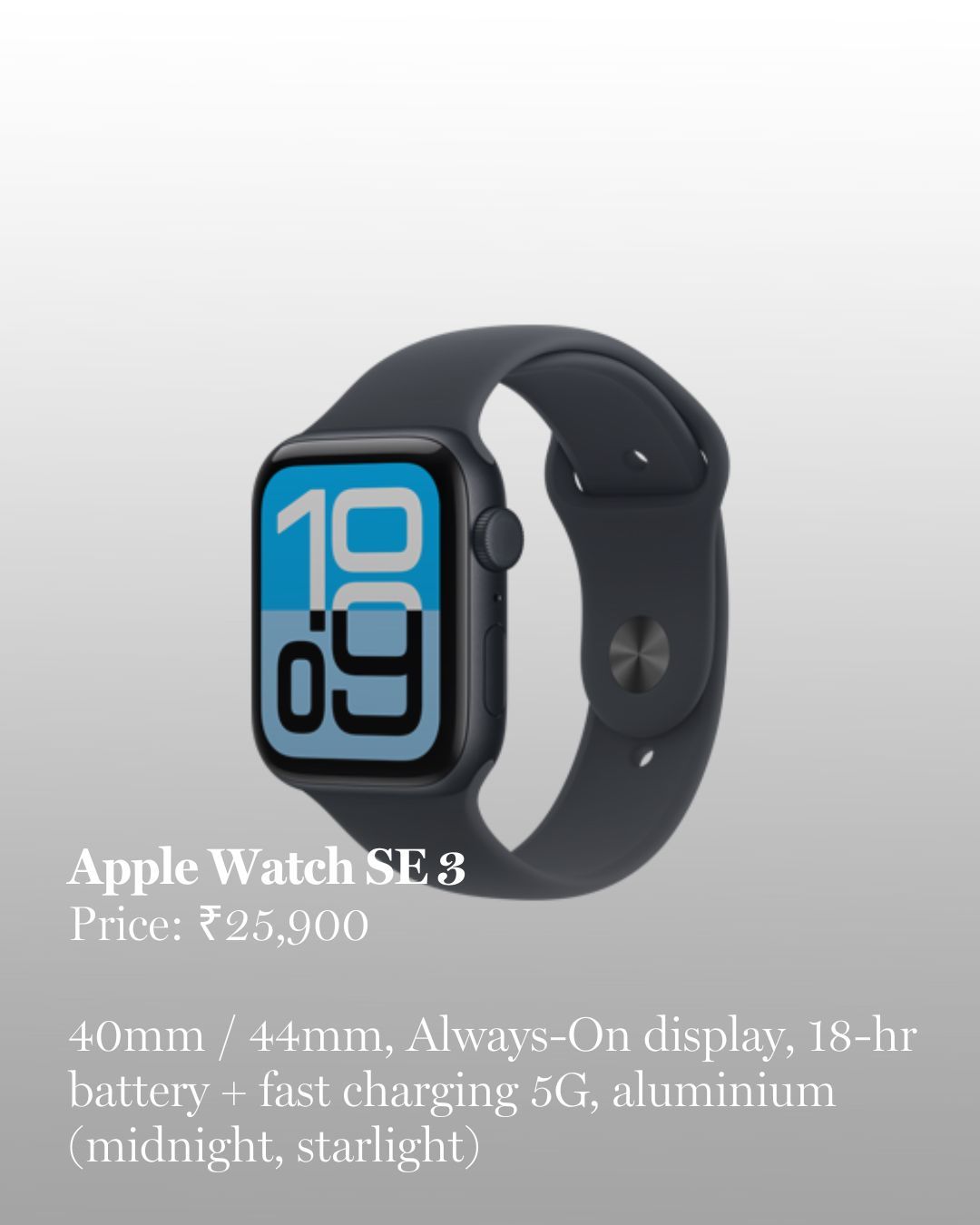
Apple Watch Series 11 gains some serious health and durability upgrades. It introduces Hypertension monitoring, using the optical heart sensor to passively check for signs of high blood pressure over 30-day trends and alert you if needed. There’s also a new Sleep Score feature that analyzes your sleep quality each night. The Series 11’s design is similar to Series 10, but uses a tougher Ion-X glass display that’s 2x more scratch-resistant thanks to a special ceramic coating. It supports fast charging and still manages about 24 hours battery life on a charge. Live Translation (as seen in AirPods) is built-in too for real-time language help. The watch comes in 42mm and 46mm sizes, with aluminum (Jet Black, Rose Gold, Silver, Space Grey) or polished titanium cases. India price: starts at ₹46,900 for the GPS + Cellular model.

Apple Watch SE 3 brings Apple’s budget watch closer to the flagships. It now features an Always-On display for the first time, so you don’t have to raise your wrist to see the time. It’s powered by the newer S10 chip (faster than the last SE’s processor) for smoother performance. The SE 3 also inherits health features like Sleep Apnea detection, Sleep Score, and even on-device Siri that can answer queries or play music through the watch’s speaker. It supports new gesture controls (like a double-tap or wrist flick to dismiss alarms/notifications) similar to the Series 11. Fast charging has been added, and it delivers about 18 hours of use – enough for a full day. The SE 3 sticks to the basics (no ECG or hypertension alerts here), but it’s a solid update for the price. India price: starts at ₹25,900 for the base variant.
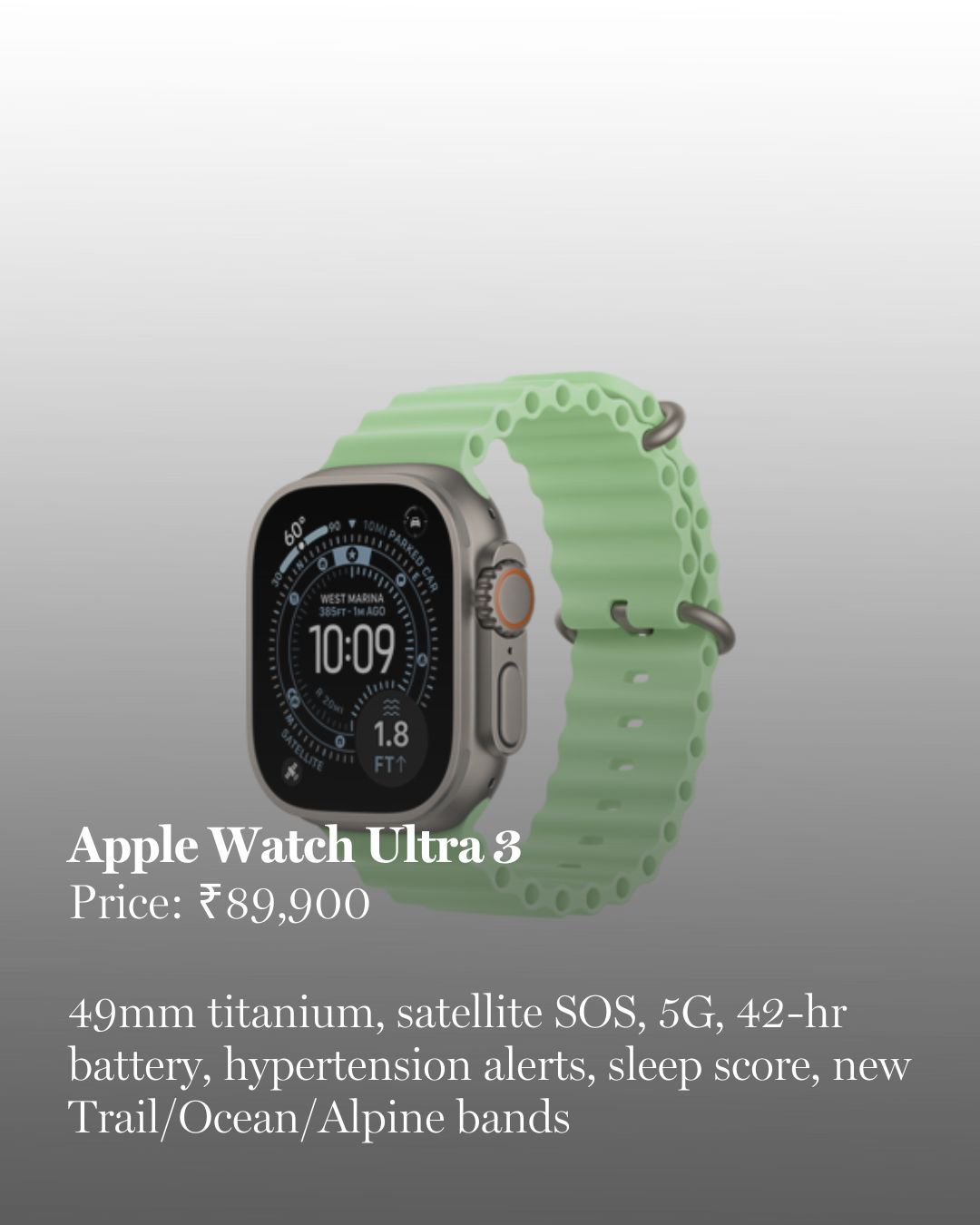
Apple Watch Ultra 3 is the no-compromise, outdoor enthusiast’s watch – now even more extreme. It sports the largest display ever on an Apple Watch, with thinner bezels and up to 3,000 nits brightness for sunny visibility. The always-on LTPO OLED screen can refresh as low as 1Hz (showing even a ticking seconds hand continuously) without draining battery. Speaking of battery, Ultra 3 is claimed to last 42 hours on normal use, and up to 72 hours in Low Power mode – the longest of any Apple Watch. It’s powered by the latest S11 chip (with extra GPU/Neural cores for advanced metrics) and even supports two-way satellite communication. The Ultra 3 also gets the new hypertension and sleep tracking features of Series 11. It comes in a 49mm titanium case (Natural or Black) built to MIL-STD durability, with refreshed band options (including new Alpine Loop and Ocean Band colors). Prices start at ₹89,900 for the GPS + Cellular model, same as last year’s Ultra. Considering its beefy upgrades (and beefy size), that price staying put is good news for adventurers’ wallets.
And Yes – New iPhones: iPhone 17, 17 Air, 17 Pro & Pro Max
Amid the memes, Apple’s iPhone 17 series itself comes with significant upgrades. Here’s a breakdown of each new iPhone and how they improve on their predecessors:
iPhone 17
The iPhone 17 moves closer to Pro-level specs this year. It features a 6.3‑inch Super Retina XDR display (slightly larger than the iPhone 16’s screen) with a 120Hz ProMotion refresh rate. Notably, 120Hz and Always-On display are now on the base model – previously, high refresh was earlier reserved for Pros. The display can hit up to 3,000 nits peak brightness for great outdoor visibility, and it’s protected by a new Ceramic Shield 2 glass that’s more scratch resistant and anti-glare in sunlight. Under the hood, it runs on Apple’s A19 chip, designed to handle advanced AI features and deliver smooth gaming experience.
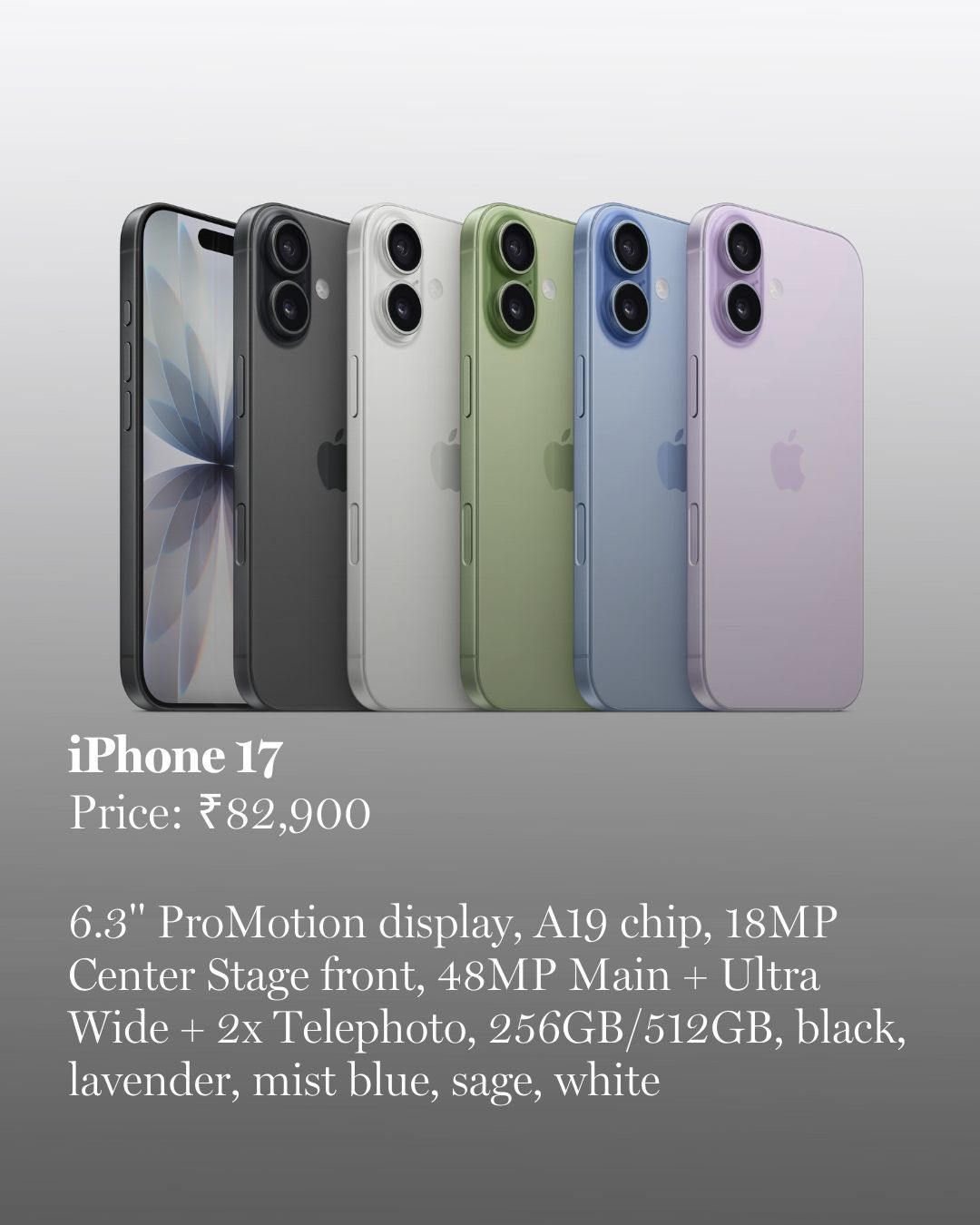
Camera-wise, the iPhone 17 introduces a “dual fusion” camera system, that combines a 48MP main sensor with a 2x telephoto capability, essentially using the high resolution to enable optical-quality zoom, along with a new 48MP ultra-wide camera that captures more detail than before. On the front, Apple has upgraded the selfie camera to 18MP and given it a quirky new shape (it’s square now) so that you can take landscape selfies without rotating the phone. The front camera also supports Center Stage, auto-framing you during video calls to keep you in view. The base iPhone 17 gets a lot of what used to be “Pro” treatment. Prices for the iPhone 17 start at ₹82,900 for 256GB storage (Apple has finally ditched the 128GB base), with a 512GB option at ₹1,02,900. It’s offered in fun colors like lavender, mist blue, sage green, black, and white.

iPhone 17 Pro & Pro Max: Apple’s flagships got their expected yearly boost, with some noteworthy changes. Both the 17 Pro (6.3″) and 17 Pro Max (6.9″) feature brighter 120Hz LTPO displays (up to 3000 nits outdoors) with Always-On mode. Interestingly, Apple has switched the Pro chassis to aluminum this year – they use a tough 7000-series aluminum unibody instead of the steel/titanium of previous models. This design integrates a new vapor chamber cooling systeminside, which not only helps sustain peak performance but also freed up space for larger batteries. As a result, Apple touts the best-ever battery life on the Pros. In fact, the big Pro Max can last up to 39 hours of video playback (with an eSIM-only variant that uses the space from removing the SIM tray for more battery). And charging gets a boost: the Pro Max supports a new 40W fast charge, hitting 50% in ~20 minutes.
Both Pros run on the A19 Pro chip, Apple’s latest silicon with a 6‑core CPU and 6‑core GPU, plus a 16‑core Neural Engine dedicated to AI. This delivers console-quality graphics and advanced on-device AI – leveraged by iOS 26 for features like Live Translation and visual intelligence tasks. The new N1 chip is on board too for Wi-Fi 7, Bluetooth 6, etc., ensuring the Pros have cutting-edge connectivity.

The camera systems see major upgrades. The iPhone 17 Pro introduces a triple-lens Fusion Camera array: a 48MP main, 48MP ultra-wide, and a new 48MP telephoto. On the Pro Max, that telephoto uses an advanced tetraprism periscope design allowing up to 8× optical zoom – the longest optical zoom ever on an iPhone. You can now capture far-off subjects with much more detail. Digital zoom extends up to 40× for those crazy moon shots. Both Pro models also get the upgraded 18MP Center Stage front camera, which not only improves selfies but can shoot 4K HDR video and keeps everyone in frame automatically during group selfies or video calls. Apple even enabled a feature to record from multiple cameras simultaneously, turning the iPhone into a mini multi-cam studio – a boon for creators.
Video professionals have new toys too: the 17 Pro/Max support Dolby Vision HDR recording, ProRes RAW and a new Apple Log for greater editing flexibility. They even added genlock support, which lets multiple iPhones synchronize recordings – hinting at how serious Apple is about the iPhone as a filmmaking tool. In short, the camera and video capabilities are a substantial leap, especially for the Pro Max which is now firmly in compact camera territory with that zoom.
Despite all the tech, the Pros haven’t forgotten style – they come in sleek colors like Silver, a new Cosmic Orange, and Deep Blue. India prices: The iPhone 17 Pro starts at ₹1,34,900 (256GB), with 512GB at ₹1,54,900 and 1TB at ₹1,74,900. The super-sized iPhone 17 Pro Max starts at ₹1,49,900 (256GB) and goes all the way up to ₹2,29,900 for a maxed-out 2TB model Yes, that top model crosses the ₹2 lakh mark – cue those memes about selling kidneys! (For context, ₹2,29,900 could buy you a decent high-end laptop or one iPhone 17 Pro Max with 2TB storage.) Pre-orders for all iPhone 17 models begin September 12 in India, and they hit stores on September 19.
